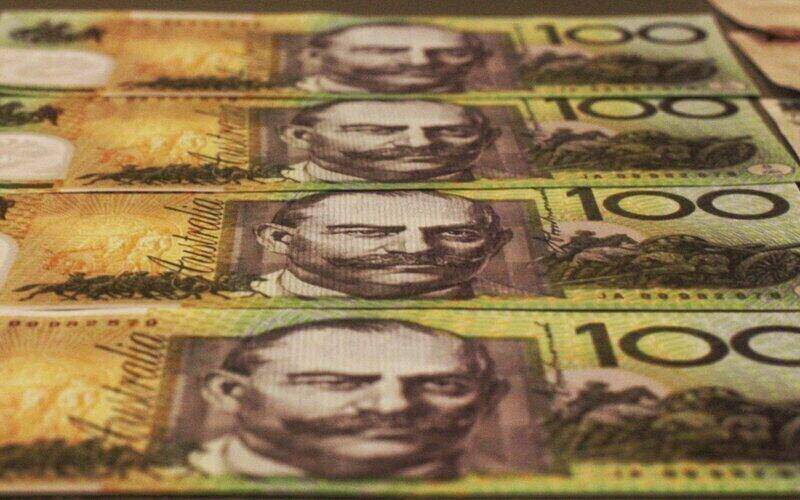In the wake of President Trump's 'Liberation Day' tariff announcements, ANZ economists have shifted their official cash rate prediction to 0.25% cuts at the next three RBA meetings.
This is in line with the general consensus - with the economic teams at the other big four banks already tipping this.
However, ANZ Research, led by Head of Australian Economics Adam Boyton, have gone further, claiming more "aggressive" easing is now more likely than not, which could mean a 0.50% cut in May.
"We would not rule out a 50 bp cut in May, if sentiment sours and the global growth outlook deteriorates significantly," Mr Boyton and his team wrote.
That would take the cash rate all the way to 3.60%, the lowest since April 2023.
Why Trump tariffs could spell rate cuts
While Prime Minister Anthony Albanese said the 10% tariff on all Australian goods imported to the US had "no basis in logic", Australia has got off relatively lightly compared to most of the rest of the world.
However, the likely impact on the global economy, particularly in the US and China, could prove more significant.
Markets in the US have nosedived in the wake of the tariff announcements, and Australian stocks have followed suit - the ASX 200 finished 2.4% lower on Friday, officially re-entering a 'correction' (i.e. a drop of 10% or more from the last peak).
Many economists have also flagged the enormous tariffs President Trump has slapped on China, by far the biggest customer of Australian goods.
In 2023, Australia sold roughly $219 billion worth of goods to China, equivalent to about 8% of GDP at the time, so it's easy to see why a slowdown in the Chinese economy could have ramifications here.
In the most recent RBA statement, Michelle Bullock removed specific references to "upside" inflationary risk, and instead recognised "risks on both sides" with an earlier nod to the impact US tariffs are having on global confidence.
Monetary policy at the moment is still restrictive, aiming to bring down spending to curb inflation, so if there is a major economic downturn, rates would likely need to come down quicker to stimulate activity.
"Additional easing from the RBA would offset much of the risk that a deterioration in confidence flows through to weaker consumer spending and business investment," Mr Boyton and team wrote.
"Our broader GDP growth, unemployment and inflation forecasts will be little impacted."
HSBC economist Paul Bloxham is now also officially predicting a May cut in the face of a "big global economic shock".
"What a difference a few days can make...we see the RBA cutting by 25 bp at its next meeting in May, previously July, and following this up with three more cuts over subsequent quarters taking the cash rate to 3.10% by early 2026," Mr Bloxham said.
This comes shortly after his appearance on Tuesday's episode of The Savings Tip Jar podcast where he said he was only expecting one more cut and not until July.
History on mortgage holders' side?
Recession fears notwithstanding, there might be some Aussie home loan holders secretly pleased with any developments that might eventuate into lower mortgage repayments.
A cut looks increasingly likely, and for those hoping for a double sized cut, history suggests the RBA have a bias for action on loosening monetary policy in response to threats to growth.
On 4 March 2020, the Covid outbreak saw then-Governor Philip Lowe cut the cash rate 0.50%, then follow up with a further 'emergency' cut of 0.25% just over two weeks later.
Looking further back, the period from August 2008 to April 2009 saw 425 basis points worth of rate cuts, including three individual cuts of 100 bps.
On evidence, the RBA are unlikely to be shy if the economy looks to be heading in a comparable direction to the Global Financial Crisis or the pandemic - however it's worth stressing this is still not a foregone conclusion.
If President Trump's play works and the US economy is strengthened by these tariffs and avoids recession, markets there may rally, often a catalyst for Australian stocks to also perform strongly.
Meanwhile, the Chinese Government is also likely to take action to prevent a slowdown there - this might mean strengthening its other trade relationships or even a stimulus package, which could mitigate the risks there.
Picture by Matt Artz on Unsplash

Ready, Set, Buy!
Learn everything you need to know about buying property – from choosing the right property and home loan, to the purchasing process, tips to save money and more!
With bonus Q&A sheet and Crossword!



 Hanan Dervisevic
Hanan Dervisevic



